“GOLD! GOLD! GOLD! GOLD!” screamed the banner headline of the Seattle Post-Intelligencer on July 17, 1897. The steamship, Portland, had docked in Seattle from St. Michael, Alaska. It carried ‘Sixty-eight Rich Men – gold prospectors – who had with them ‘stacks of gold/ a ton of gold’. The Gold Rush started. By noon that day, eager fortune seekers had booked the last berth on the Portland for its return trip to Alaska.
This lot was only the first out of some 70,000 odd people who set out to find a fortune in gold in the Klondike Gold Rush. Some 40,000 out of these actually set out on the Klondike Trail. Only about 300 of these found enough gold to be called “rich.” But, a mere handful managed to keep their wealth.
As the crowds descended on Seattle to seek information about the gold and to equip themselves for their journey in quest of gold, hawkers and outfitters in Seattle had a great time, using various innovative and imaginative sales pitches to entice the prospectors. Irrespective of the fortunes/ misfortunes of the gold hunters, Seattle prospered beyond imagination, as the prospectors bought their ‘ton of supplies’. It was not only the first great high in the boom-and-bust-and-boom checkered history of Seattle but perhaps also the birth of what is known as ‘The Seattle Spirit’ – an interesting mix of enterprise, resilience and irreverence. This spirit is what makes Seattle what it is – a destination for many reasons. And seasons.
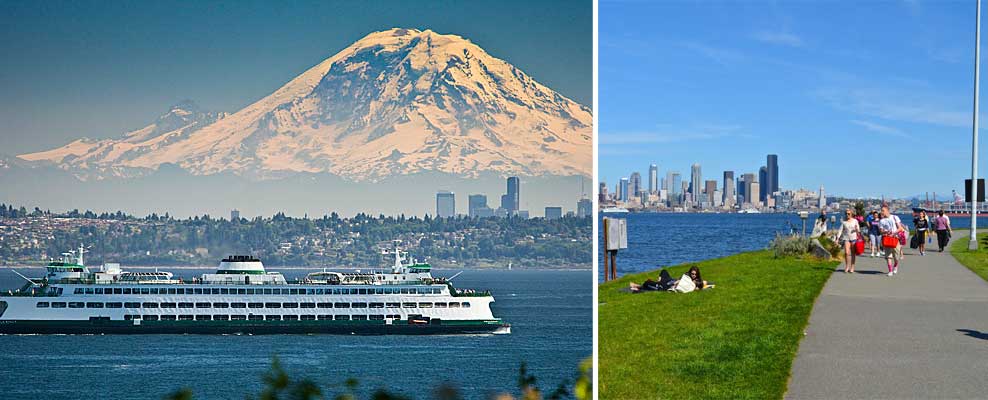
Although the Puget Sound area had been inhabited for thousands of years, the first non-Native American settlers – 12 adults and 12 children – arrived only in 1851, landing on the wind-swept Alki beach. They were welcomed by the local Indian chief whose name was anglicized as “Seattle.”
The settlers named their landing place New York Alki, an ironic use of the Chinook word meaning ‘by and by’. It is now known as West Seattle. In a few months time, the settlers moved to a better location and named it ‘Seattle’. This area of the first settlement – from where the city started – is known today as the Pioneer Square.
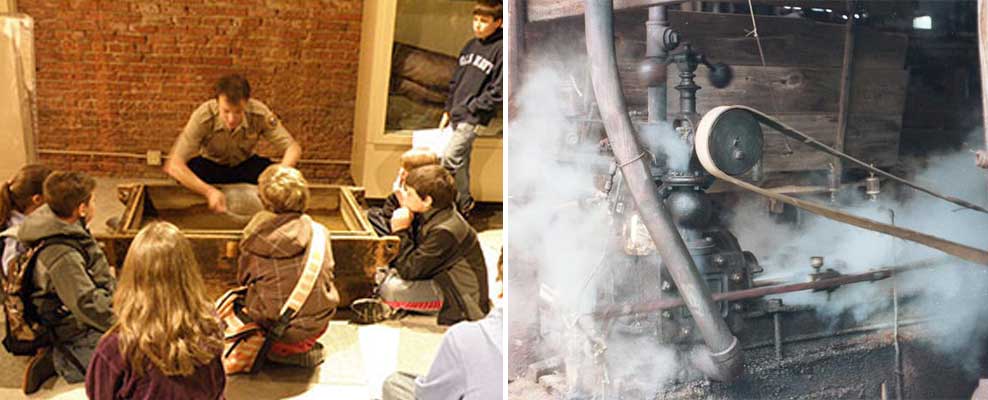
One of the earliest major enterprises in Seattle was the steam engine-powered sawmill established by Henry Yesler which not only turned the budding city into an important lumber center, but also contributed “skid row” to the English language. Woodcutters, aided by animals, slid, or skidded timber down a greased log road, to the saw mill. In time, this “skid road” separated the respectable parts of the city from the rowdy neighborhoods. “Skid Road” evolved into “skid row,” a term that refers to the seedy parts of a city.
The great fire of 1889 was a major disaster, destroying the city’s commercial district. Rebuilding started immediately, wooden structures being replaced by brick and stone buildings – giving a direction to the city’s future. Some of these buildings still survive and are occupied. The former Cadillac Hotel is now home to the Seattle unit of the Klondike Gold Rush National Historical Park.
As the population grew, so did the social and cultural advances. For a century-and-a-half, “they” came, stayed and contributed to make Seattle a unique city. ‘They’ include the Danes, Swedes, Norwegians, Finns, Germans, Italians, Chinese, Japanese, Filipinos….Boat Builders, Boeing, Starbucks, Microsoft…. and many others. The ups and downs of Seattle’s fortunes were shared, but a very steady progress was maintained.
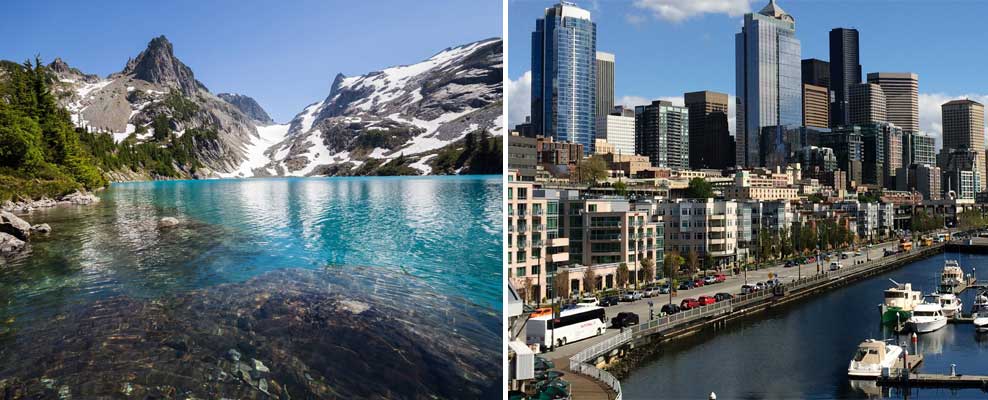
Nature had blessed Seattle with a great many charming lakes and other water bodies plus the towering presence of Mount Rainier, Mount Olympus and the Cascades Range. Man enhanced these charms with many beautiful parks. Seattle gives you a feeling of greater ‘living space’ than many other cities of the world. But waters dominate the scene. Perhaps the most interesting part of Seattle still remains the waterfront, from where the city started. Ferries and boats are an integral part of life in Seattle. Every self-respecting Seattle family must be owning at least one boat, judging by the boats parked alongside the cars. Another interesting sight for me was the aircraft-park – a huge lot filled with seaplanes, just like a car park.
What to see and do in Seattle could easily fill a book. So, I will have to be satisfied for now in taking you along to taste just one favorite Seattle goodies.
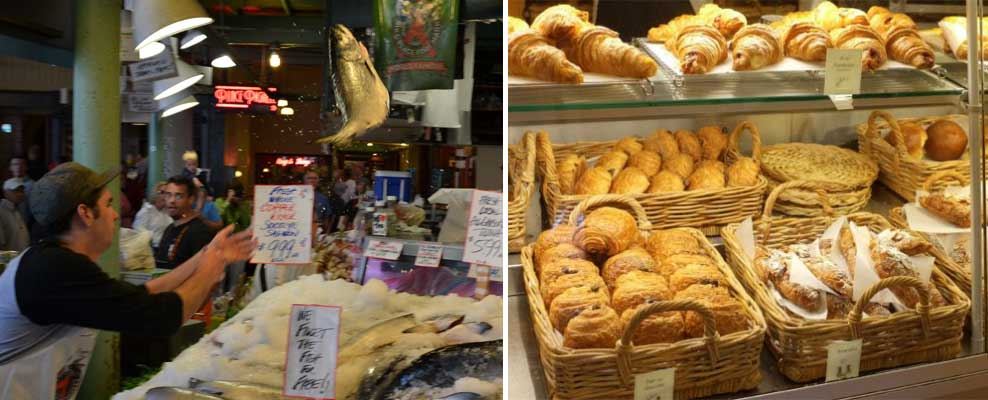
The sign proclaims prominently – “Caution: Low Flying Fish.” Some fish do fly over seas and lakes, but this sign is about dead fish which fly, with a little help from the fishmongers. You see this sign in the Pike Place Market, started in 1907, as an outlet for fresh farm produce. The market had its good days, then fell on bad times till some determined innovative thought-and-action propelled it to become a world famous attraction for locals and visitors alike. A major part was played by the spectacle and drama of the Flying Fish. The fish ordered by a customer was hurled, ‘flying’, to get wrapped, to the constant chatter of the staff. The spectacle is enjoyed by as many as 10,000 visitors daily during the summer months.
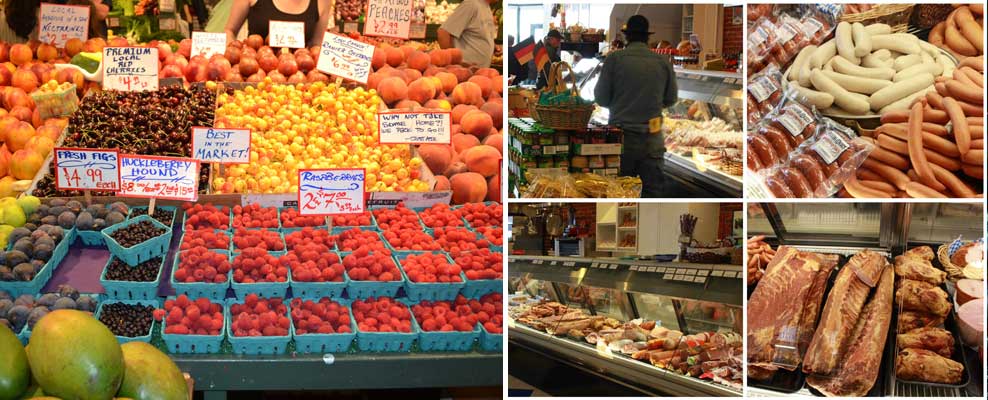
The Pike Place Market is not for the Flying Fish alone. There is fine shopping for fresh produce including fruits and flowers, handicrafts and much more. It is also the epicenter of good eating and great food-shopping in the city. ‘Not to be missed’ include Piroshky (Russian version of assorted pies), Pike Place Bakery, The Crumpet Shop, Le Panier Bakery/Dessert/Coffee Shop, De Laurenti Specialty Food and Wine and Beecher’s Hand-made Cheese. Your Food Pilgrimage would not be complete without a cup of coffee at the small Starbucks coffee shop, established here on March 31, 1971. It was from this modest outlet that Starbucks zoomed to be the biggest chain of coffee shops in the world with earned revenue of 14.89 billion US dollars in 2013. So drink history and success with your Latte. Keeping the Starbucks store company are a number of coffee shops with a very wide selection of coffees. Shop for the best foods of the world – saving air tickets to Paris, Rome and London – in the Pike Place Market. Whatever you fancy – Fine Cheeses, Meats, Wines, White/Brown eggs of free range chicken, Duck’s Eggs, Turkey Eggs, Quail Eggs, or whatever, is available. Buy, have great food and be ready to get entertained.
There are buskers, magicians, human statues, magicians and what you have. But, there are also the ghosts.
Pike Place Market was built where the cabin of ‘Princess’ Angeline, eldest daughter of Chief Seattle used to live. She made a living by taking in laundry and selling hand-woven baskets. The old and bent woman, walking slowly with the aid of a cane and a shawl over her shoulders and a red handkerchief over her head, became a familiar figure. On May 31, 1896, she died at age 85 and was given a fine funeral. But Angeline was not quite ready to leave her habitat. Her spirit has been spied over the decades at the Pike Place Market, a real figure till it suddenly disappears.
From 1918 to 1941, Arthur Goodwin was the market director and was often known to be looking down on the goings-on from his upper level office. His erstwhile office is now the Godwin Library. Arthur’s silhouette is often seen looking down from the Goodwin Library. He is also sometimes seen swinging a golf club in his old office.
Then there is ‘The Fat Lady Barber’, who continues to lurk in the market at night. In the 1950s, this fat lady was known to sing her customers to sleep with sweet lullabies. When they were comfortably snoozing, she relieved them of any cash in their pockets. In the 1970s, an area of the floor gave away and the fat lady fell to her death. Cleaning workers at night hear the sounds of sweet lullabies.
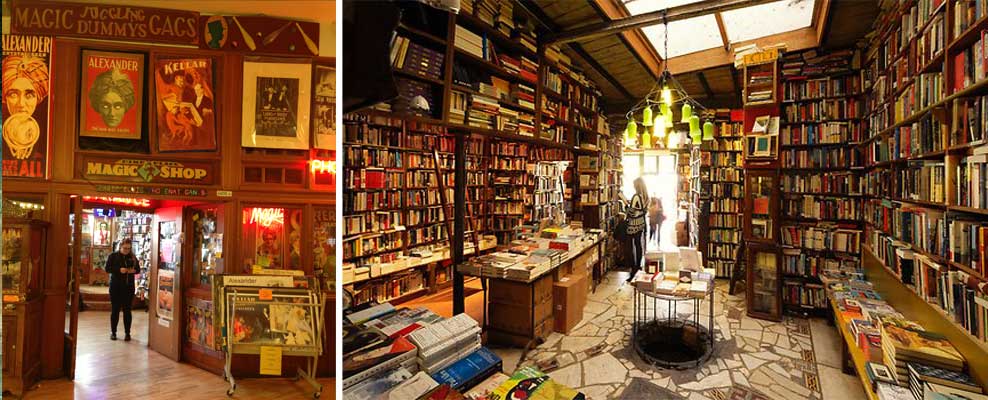
Sheila’s Magic Shop is haunted by the spirit of a woman who inhabits a crystal ball. Called Madame Nora, she previously haunted as hop called Pharaoh’s Treasure before she decided to move to Sheila’s. Pharaoh’s received the crystal ball in trade from a woman who had warned the owner about Madame Nora, but the owner thought nothing of it. Then strange unexplained things being moved at night began happening. The owner got fed up and passed the crystal ball to Sheila’s. Madame Nora was a person who used to run a place called the Temple of Destiny in the early days of the Pike Place Market. She was known to have practiced crystal gazing, Indian psychic projections and Egyptian sand-divining. She insists on leaving her psychic imprint till today.
At a Greek deli called Mr. D’s, the owner tells of spirits who fight in the downstairs walk-in freezer. At the Shakespeare and Co, Bookstore, the culprit was a book. The owner would arrive every morning to find the same book off the shelf and on the floor. The book was duly brushed off and put in its proper place, only to be found on the floor the next morning. The owner had no choice but to destroy the book. Whatever be the reasons, Gourmet, Fishy, Spirituous or Para-normal, Pike Place Market is a great symbol and one of the greatest attractions of Seattle. A must visit place. But, be warned, once, or twice or even thrice, may not be enough.
This is just a Seattle Starter. We will have to go back for more.
